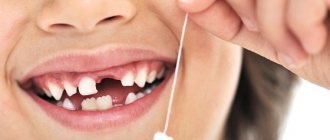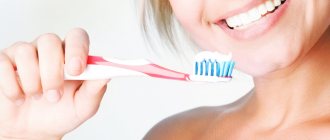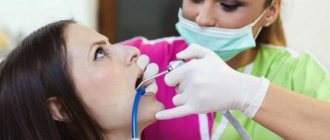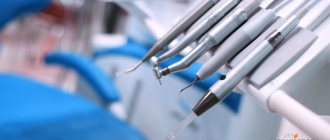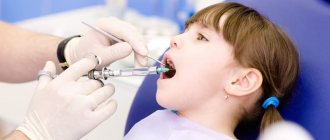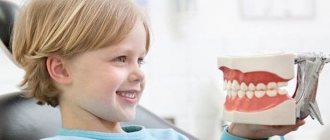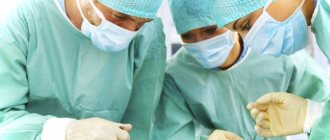Get rid of dental plaque
Professional cleaning by a hygienist will help make your teeth lighter and return the enamel to its natural shade.
The cleaning device emits a high-pressure stream of air, water and an abrasive substance (sodium bicarbonate crystals). The size of the crystals is so small that they remove plaque, stains from cigarettes, coffee, wine and other coloring products without harming tooth enamel. And during the procedure, the doctor can identify hidden problems, for example, beginning caries.
Cleaning takes 20–30 minutes. After it, you should refrain from eating and smoking for 2 hours.
Contraindications
No. If the enamel is highly sensitive, the doctor may recommend deep fluoridation - coating the teeth with varnish containing fluoride.
pros
- Safety, since there is no chemical treatment of teeth.
- Painless since there is no mechanical trauma.
- Relatively low price.
Minuses
It is impossible to radically whiten teeth using professional hygiene.
Postoperative Instructions
- If you experience pain, take the recommended painkillers.
- If swelling occurs, be sure to place a cold compress on the facial skin in the postoperative area for the first 3 hours after surgery. Apply the compress for 20 minutes, with breaks of 10 - 15 minutes. If possible, repeat this operation within 2-4 hours after surgery.
- Do not rinse your mouth on the day of surgery. The next day, rinse your mouth with a chlorhexidine-based solution 2 times a day for 30 seconds. Brush your remaining teeth.
- During healing, you should avoid eating solid foods. DO NOT drink through a straw, spit for 36 hours, or smoke (as discussed in the Dental Implants and Smoking appendix).
- Bleeding: Bleeding a small amount of blood is normal. If bright red blood appears on your tongue, call the Clinic immediately.
- A feeling of tension in the jaws is a normal reaction after surgery.
- The appearance of yellowish-brown pigment spots on the face is temporary (hematomas).
- Paresthesia - loss of sensation in the area of surgery - is a temporary phenomenon, which, however, may require a long recovery period.
- If you have any problems or questions, please call (812) 570-570-0.
- Take all prescribed medications.
Whiten your teeth at the dentist
To achieve the perfect smile color after cleaning, you can resort to professional whitening. There are several methods: chemical (lightening by 5–7 tones), photobleaching (lightening by 8–10 tones) and laser bleaching (lightening by 10–12 tones).
All types of whitening are chemical, as they occur through the action of a special gel based on hydrogen peroxide or urea.
The word "chemical" means that no catalyst is used and the whitening occurs on its own after the gel is applied. In photo-bleaching, the catalyst is light from a halogen or ultraviolet lamp; in laser bleaching, a laser beam acts as a catalyst.
The session lasts 30–60 minutes. After the procedure, you should follow a white diet for several days - avoid coloring food and drinks.
Contraindications
- Age up to 16 years.
- Pregnancy and breastfeeding period.
- Increased sensitivity of teeth and gums (not relevant for laser whitening).
pros
- Fast and radical teeth whitening.
- To maintain the effect for a long time, professional hygiene 1-2 times a year is sufficient.
Minuses
Fillings and crowns are not whitened and may not match the color of your teeth after the procedure. The doctor can lightly polish the fillings and cover them with a lighter material, but the crowns will have to be replaced.
Also, each type of whitening has its own disadvantages: chemical whitening has an aggressive effect on tooth tissue and enamel, photo whitening can be painful and is not suitable for hypersensitive teeth, and laser whitening is very expensive.
After tooth extraction
- If you are given a gauze swab, then after 5-10 minutes you should immediately spit it out. If there is no bleeding, then there is no point in holding it, because the blood in the tooth socket coagulates almost immediately.
- You can eat food no earlier than 2 hours later. You can drink it right away. On the first day after surgery, food and drinks should not be hot.
- You should not pick at the wound with your tongue or foreign objects.
- You should not rinse your mouth on the first day, as there is a blood clot in the socket of the extracted tooth. Intense rinsing may cause the clot to simply rinse out of the hole. As a result, the hole will be empty. Over time, germs and food debris will accumulate there and there will be inflammation.
- Within 3 days after removal, it is necessary to reduce physical activity. Avoid running or high-impact activities. You are not allowed to visit the swimming pool, bathhouse or sauna.
- After removal, minor bleeding may occur for 1-2 days; if significant bleeding occurs, contact the clinic immediately.
- Swelling of varying severity (usually possible after complex removal of wisdom teeth) goes away on its own, starting 3 days after surgery. To reduce the severity of swelling, you can apply ice to the cheek, in the area of surgery, during the first 4-5 hours after surgery, keep the cold for 7-10 minutes at intervals of at least 30 minutes.
- From the second day after surgery, to maintain hygiene, gently rinse your mouth with warm water after each meal. Along with rinsing, brush your teeth, being careful not to damage the tissue in the surgical area.
- If pain appears or a fever occurs, immediately or a few days after removal, you must call the clinic as soon as possible at 8 (812) 570-570-0 and report it.
Whiten teeth at home
If you don't have time to visit the dentist or you can't afford professional procedures, you can do whitening at home. But it’s still up to the doctor to select a home whitening system.
Such systems most often consist of a whitening composition and a tray, which is filled with it and placed on the teeth. You either wear them every day for 15-20 minutes or leave them on overnight.
Contraindications
- Age up to 16 years.
- Pregnancy and breastfeeding period.
- Mobility of teeth and exposure of their roots.
- Gum diseases.
- Allergy to hydrogen peroxide or urea.
pros
- Convenience: the procedure is performed at home, no need to travel to the doctor.
- Lower price compared to professional whitening.
Minuses
The duration of the course (from a week to a month) and the effect is much less striking than from a professional procedure.
Dentist recommendations
After tooth extraction:
Remove the tampon 20 minutes after removal
· Do not eat for 2-3 hours, do not take hot food or drinks for 24 hours
· Do not touch the wound with your tongue, hands or foreign objects.
Do not suction the blood clot from the socket
· Avoid visiting the sauna and taking hot baths
· Avoid hypothermia
· You should not give active physical exertion to the body or engage in heavy physical labor.
· If the hole is bleeding, you can apply a sterile gauze swab to the wound for 30 minutes (we recommend that you consult your doctor).
· If pain bothers you, take a pain reliever (except aspirin, as it thins the blood).
· To speed up healing, (after 24 hours!) make oral baths with a warm salt solution (half a teaspoon of salt per glass of water) or chamomile decoction.
· If anything bothers you, please contact our dental surgeon.
Don't forget (if you are scheduled) to come for a follow-up examination!
· Teeth must be brushed twice a day. After eating, we recommend rinsing your mouth to remove any remaining food.
· To clean the spaces between teeth, you need to use dental floss and brushes as recommended by your dentist.
· If, after filling and the end of anesthesia, the filling interferes with the closure of the teeth, then it is necessary to consult your doctor as soon as possible.
· Do not eat until the feeling of numbness passes, after pain relief (about 2 hours).
· If you have fillings made from luminous materials, you should not eat food containing natural and artificial colors (for example: blueberries, tea, coffee, etc.) during the first 3-4 days after filling the tooth.
It’s not enough to have even a very good brush and excellent toothpaste; first of all, you need to be able to brush your teeth.
It is imperative to brush your teeth after breakfast and dinner.
· Allow at least 2-3 minutes for this procedure, depending on the hardness of the brush.
· The upper and lower rows of teeth are cleaned separately.
· The interdental spaces are freed from plaque and food debris with dental floss; if the teeth are sparsely spaced, the floss is replaced with interdental brushes.
You can be considered to be good at brushing your teeth if you remove plaque from:
chewing surfaces, external surfaces - buccal and labial, internal surfaces - lingual and palatal, interdental spaces.
| 1. The outer surfaces of the teeth from the gums | 2. Inner surfaces of teeth from gums |
| 3. Inner surfaces of the front teeth from the gums | 4. Chewing surfaces of teeth |
| 5. Gum massage | 6. Cleaning your tongue |
Hygienic measures for the care of dentures are carried out with products designed specifically for cleaning removable dentures. When cleaning a denture with toothpaste and a hard brush, scratches form on it, which contributes to the rapid accumulation of plaque on the denture. It is advisable to use soft or medium-hard toothbrushes. Toothpaste must be selected individually for each patient. It is advisable to use low-abrasive toothpastes, preferably in the form of gels. It is better not to use bleaching pastes for smokers, as they are often more abrasive. It is better to use alcohol-free mouthwashes that do not contain stannous fluoride and chlorhexidine. A large amount of alcohol in them can help soften and dissolve some polymer materials.
· Follow your doctor's recommendations and take prescribed medications.
· For the first two days after surgery, apply an ice pack to the cheek on the surgical side /2-3 times a day for 15-20 minutes/.
· After eating, rinse the mouth with solutions of antiseptics (chlorhexidine, furacillin, chamomile, sage decoction), but do not perform active rinsing movements for the first day after surgery.
· In case of bleeding, place a gauze swab moistened with salt water (1 tablespoon of salt per glass of boiled water) on the suture area and bite lightly.
· For the first two days it is recommended to sleep on a high pillow.
· We strongly recommend not to smoke or drink alcohol in the first 5-7 days, in order to avoid their negative impact on blood circulation and wound healing, and also to limit their consumption in the next 3 weeks.
· Follow a liquid diet for the first 7 days after surgery, then eat soft and non-spicy foods for the next 3 weeks.
· Brush teeth outside the intervention area, as normal tooth brushing during the first week after surgery can damage tissue in the intervention area
· During the first 7-9 days, medical examinations are required.
· In the subsequent period, regardless of the period after surgery, if pain, swelling and other complaints occur in the implantation area, you must urgently contact the doctor who operated on you.
· Avoid exercise for one to two weeks.
· In order to prevent complications, you need to be examined 2-3 times a year by your attending physicians /surgeon and orthopedist/.
· Unacceptably overcooled
nie, visiting saunas, baths for 2 weeks.
A preventive examination by a dentist should be done at least 2 times a year, even if nothing bothers you. After the examination, you will have complete information about the condition of your teeth, gums and mucous membranes of the mouth and lips.
Remember that many dental diseases in the initial stages cannot be detected without a professional examination by a doctor!
Can pregnant women have their teeth treated?
Not only is it possible, but it is necessary
, because a problematic tooth is a potential source of infection, which in the case of pregnancy is a very, very undesirable fact. In addition, there is a risk of various complications, which, of course, are better to prevent than to heroically fight them later. Of course, given the specificity of the situation, some precautions must be taken during treatment.
· when planning a pregnancy, along with other doctors, it is necessary to consult a dentist;
· at 8, 18 and 28 weeks of pregnancy it is necessary to undergo a routine examination by a dentist;
· it is necessary to carry out sanitation of the oral cavity, i.e. have it professionally cleaned. It is also recommended to repeat cleaning after the 30th week. Ultrasonic scaling is absolutely safe during pregnancy.
· it is advisable to carry out all treatment procedures in the 2nd trimester (3-6 months), although if necessary, with the permission of the gynecologist, treatment procedures can be carried out at almost any period;
· special attention should be paid to improving and, most importantly, regular oral hygiene;
· in most cases (50-70%), after the 1st trimester the so-called “pregnancy gingivitis” may occur. Symptoms of gingivitis include hypertrophy (enlargement) of the gums, bleeding, unpleasant odor and severe sensitivity. Clinical studies have shown that the presence of severe inflammation in the gums increases the risk of premature birth by 6-7 times, so it is necessary to consult a dentist and undergo thorough treatment.
Is local anesthesia harmful during pregnancy?
No, it's not harmful. Of course, provided that the dentist is aware of pregnancy and uses harmless medications. Numerous scientific studies, various certification tests and many years of practical use have revealed almost absolutely safe infiltration and conduction anesthetics that can be used with confidence during pregnancy. Currently, anesthetics of the articaine group without adrenaline (Ultracain D, Ubistesine, Scandonest Plain, etc.) are generally accepted drugs that can be used with confidence during pregnancy, because articaine hydrochloride does not penetrate the blood-placental barrier, thus the fetus is not in danger. By the way, general anesthesia (anesthesia) is strictly contraindicated during pregnancy.
Can antibiotics be used during pregnancy?
It is possible, but only under strict instructions from the dentist and only after obtaining permission from the gynecologist. According to the generally accepted protocol, a dentist cannot independently, without the consent of a gynecologist or reproductive specialist, prescribe antibiotics. Priority in this matter belongs to the gynecologist observing the pregnant woman.
Can pregnant women have x-rays?
X-ray exposure can have a very negative impact on the development of the fetus, therefore X-ray examinations during pregnancy should be carried out in compliance with the strictest precautions (this applies not only to dental practice, but also to general medical practice). We cannot ignore the fact that organisms with dividing cells are exposed to the greatest harm from x-rays. And, as you know, at all stages of pregnancy, the expectant mother undergoes cell division of all tissues and organs inside. So why take the risk? It is better, of course, to refuse x-rays. Moreover, even doctors have the right to insist on an X-ray examination only if you are in an extremely serious condition that is life-threatening or want to terminate the pregnancy. So try to answer the question yourself: is it possible to take x-rays during pregnancy?
In addition, in the first trimester of pregnancy you should completely avoid X-ray examinations. Scientists have proven that in the early stages, this procedure is dangerous. It can cause a lot of different dangerous pathologies in the fetus.
Carry out artistic restoration of teeth
If there are chips and cracks, the interdental spaces are enlarged, and the teeth themselves are not pleasing with either color or shape, artistic restoration will help. It will correct the shape and color of teeth, hide old unaesthetic fillings, stains, chips and cracks in enamel. Sometimes before the procedure, caries is treated and old fillings are replaced.
Contraindications
- Bruxism is teeth grinding during sleep.
- Malocclusion or missing chewing teeth.
- Extensive tooth decay.
- Metal or metal-ceramic crowns opposite those teeth that the patient wanted to restore.
pros
If there is no caries, the teeth do not require grinding or any drilling, and the procedure itself is carried out in 1-2 visits to the doctor. The result is practically indistinguishable from the natural appearance of teeth.
Minuses
This procedure is not suitable for everyone due to a significant list of contraindications.
Install a “quick” crown
If a piece of a tooth has chipped or the enamel has lost its natural color, and the tooth stands out among its neighbors, then installing a ceramic crown—a prosthesis that covers the tooth on all sides—will help solve these problems.
The crown is made from a solid ceramic bar or veneer (a thin plate that the doctor places on the front surface of the tooth) and is installed in just one visit to the dentist.
The doctor will scan your teeth, and the computer will make a crown or veneer in 1–1.5 hours from ceramics or porcelain. After which the dentist will install the finished crown on the tooth.
Contraindications
- Bruxism.
- Mobility of teeth.
pros
Long-term restoration of the tooth's shape, after which no one will guess that there is a crown or veneer on the tooth.
Minuses
Relatively high price.
How to properly care for your teeth? 8 tips from a dentist
How to properly care for the oral cavity and prevent caries without breaking the bank? Dentist Dmitry Boguslavsky told 5-tv.ru what rules you need to follow so that you have a beautiful smile.
Dmitry Boguslavsky Chief physician of the Trilogy dental clinic
How to choose a toothbrush?
“There are two categories: regular toothbrushes and electric ones. Electric toothbrushes come in different types: there are those with heads that rotate in a circle, and there are those that make progressive movements up and down. Hand brushes are divided into categories based on the material of the bristles. There are natural bristles, and there are artificial ones. Artificial ones are considered better because natural ones fail faster. All advertising steps to reach hard-to-reach places are marketing. The main thing is to brush your teeth for the right amount of time, at least twice a day for two minutes a day, so that all areas are thoroughly cleaned. This is what you should pay attention to."
How often should you change your toothbrush?
“It is believed that a toothbrush can only perform its function for about two to three months. There are soft and harder brushes. Therefore, it is worth looking at the brush visually: if it has already lost its shape, then it is worth changing it. Two months is the period it should serve.”
How to choose toothpaste?
“Pastes are therapeutic and prophylactic. Here's what you need to watch. If you want to fight sensitivity or have problems with your gums or have some kind of inflammation, then you should choose anti-inflammatory pastes, medicinal ones. Regarding preventive pastes: I am not a supporter of cheap pastes; they can contain a lot of unhealthy substances. A good pasta cannot be cheap; you need to choose a pasta in the mid-price category. There is a belief that fluoride in toothpaste is harmful, many people refuse it. But there are studies that refute this."
Are additional cleaning products required?
“I always recommend an irrigator - if used correctly, it is very useful. Using an irrigator, you can hydromassage your gums and improve blood circulation, as well as wash out all the food from the spaces between your teeth. This does not replace the use of dental floss - during the day after meals, if there is no time to brush your teeth, dental floss can be used. For cavities, you can use a mouthwash, but a brush, irrigator and floss are the trinity that needs to be used. The brush will not be able to remove food debris between the teeth. Brush contact points are not available. Therefore, plaque between the teeth can be removed with floss or an irrigator. Contact caries are very common: a large percentage of tooth damage occurs at the contacts. People use floss extremely rarely: if food remains between the teeth, it can turn into pathogenic microflora.”
How often should you visit the dentist?
“If you complete the full course of treatment once, then visits every six months are preventive. Sometimes it will be necessary to have your teeth professionally cleaned or to prevent the initial stage of caries development. It is inexpensive, and it will be better for the tooth if everything is treated at an early stage. Therefore, it is not recommended to start and walk “only when you are sick,” because all this turns into big expenses.”
Does teeth whitening affect the health of enamel?
“Whitening is a cosmetic service and does not have a therapeutic effect, although the latest whitening systems claim that they help treat the initial stages of caries and seal cracks, but we cannot verify this. Studies have shown that whitening is not harmful. During the bleaching procedure, water and atomic oxygen are released, which finds the pigment. The tooth becomes dehydrated for some time and for several days actively takes moisture from the saliva. Therefore, it is very important that after bleaching people do not consume any coloring foods or drinks. For aesthetic results, bleaching is an acceptable procedure. But there’s no need to overdo it here either.”
Do home whitening strips help?
“I am skeptical about such methods. Nowadays there are many cheap options for whitening, when it is done by non-professionals in shopping centers. Such systems in the hands of uneducated people can cause harm to a person’s teeth and overall health.”
What are veneers and why do Hollywood stars get them?
“A veneer is an overlay on the front surface of a tooth. There are different names: onlay, crown, half-crown, full veneer - they vary depending on how much artificial material covers the tooth. Modern veneers are made from solid ceramics that are chemically bonded to the teeth. Veneers are used in various clinical cases. On the front teeth it can only be frontal veneers, and on the side teeth - onlays or crowns. The thickness of these scales is 0.3 millimeters, quite small. Whether a tooth is ground or not is individual. First, a simulation is done of what will be an analog or digital method.
In modern realities, we determine the relationship of the lower and upper jaw in a new position, because the closure position does not correspond to the one that would be comfortable for your muscles. The joints and jaw heads should also be positioned correctly in their compound sockets. A certain series of diagnostic measures are carried out, the model is plastered in the correct position for you. And after such a diagnosis, it is decided whether it is necessary to remove something from the teeth. If so, the mock-up of the oral cavity is transferred using restorations that are scored. Impressions of the teeth are taken and “temporary” restorations are installed—the person wears them for a while. If everything suits the patient, then permanent restorations are installed and fixed in the mouth. They create the opportunity to change the closure of teeth, perform an aesthetic function, restore the bite and shape of the teeth.”
The dentist reminds you that you need to brush your teeth at least twice a day and visit the dentist for preventive care every six months.
Restore healthy color to gums
To eliminate gum inflammation, photodynamic therapy will be required. The gel is applied to the gums and after 10 minutes is illuminated with a laser beam. Oxygen is released into the tissue from the gel, which quickly eliminates inflamed cells. As a result, the gums become healthy, acquire a pleasant pale pink color, bleeding disappears, and increased sensitivity decreases.
Contraindications
No. This treatment method is one of the safest in dentistry.
pros
Painless because the gums are not subject to mechanical damage.
Minuses
No. This is a simple procedure that does not damage the gums, does not cause pain, and does not require the use of antibiotics or other medications.
Return your gums to their beautiful shape
If your gums have receded due to periodontitis or periodontal disease, and you want to prevent the development of this process, you can turn to mesotherapy with hyaluronic acid. This procedure ensures that the gums will neither recede nor atrophy due to the increased supply of nutrients. Mesotherapy is carried out once every 6–12 months and does not take much time.
Contraindications
- Low blood clotting.
- Presence of cancer.
pros
- Prevention of gum disease.
- Elimination of bleeding.
- Acceleration of tissue recovery.
Minuses
Possible allergy to hyaluronic acid.
Dentist advice
How to keep your teeth healthy, how to clean them correctly, how toothpastes and brushes differ from each other, is it possible to treat the teeth of pregnant women, is it necessary to carry out prosthetics if only one tooth is lost, is it possible to cure periodontitis, etc.
There are a lot of questions that patients have. Many years of experience show that patients often have to lose teeth either due to their carelessness and frivolous ignorance, or, what is much worse, due to the unprofessionalism of the dentist who has been seeing the patient for a long time.
It is possible to answer all questions for each patient only through personal communication. Here we will try to give some advice and dispel some myths and misconceptions.
To begin with, only 2% of caries incidence is due to hereditary predisposition, the remaining 98% depends on hygiene and the quality of dental care. One basic misconception is that it is easier to remove a tooth than to cure it. Who has it easier, the doctor or the patient?
The removal of one tooth will cost the patient 5-10 times more expensive in future prosthetics than his own treatment. After the removal of even one tooth in the absence of prosthetics, problems with the bite, temporomandibular joints, gastrointestinal tract, and nervous system begin within one year, which the patient is not even aware of.
About daily oral hygiene
It is necessary to brush your teeth 2 times a day, before bed and after breakfast. The movements of the toothbrush should be directed from top to bottom on the upper jaw and from bottom to top on the lower jaw (from red to white or from gum to tooth). Under no circumstances should you move the brush horizontally. This will lead to gum injury and, over time, to atrophy of the dentogingival papillae, as well as to abrasion of the enamel in the cervical area of the teeth and the formation of enamel defects (wedge-shaped defects). If there are three (wide spaces between the teeth), it is necessary to use dental floss and dental brushes (the dentist will help you use dental floss correctly and choose the required size of brushes).
About periodontitis
If you have bad breath, be sure to make an appointment with a periodontist, who, if necessary, will conduct a course of periodontal treatment or refer you to other specialists (gastroenterologist, hematologist, etc.). It is advisable that your doctor select a toothbrush and toothpaste for you. Remember that the first signs of incipient periodontitis are slight bleeding of the gums when brushing your teeth and bad breath. The sooner you contact your dentist if you notice these signs, the greater the likelihood of preserving your teeth into old age. The process of bone destruction during the development of periodontitis can and should be stopped, but achieving a stable result is possible only with the combined efforts of the doctor and the patient.
It is necessary to introduce more fresh fruits and vegetables into your daily diet. This promotes self-cleaning of teeth, training of periodontal tissues and, naturally, normalizes the vitamin balance of the body. Chew sugar-free gum after meals, which normalizes the pH of saliva by increasing salivation and washing away excess glucose from the surfaces of the teeth.
Eat dairy products - a natural source of calcium; river and sea fish, corn, buckwheat, parsley are rich sources of fluoride; oranges, grapefruits, kiwis, cabbage, currants, blueberries are sources of vitamin C, which strengthens the walls of blood vessels and improves immunity. Do not forget that calcium is absorbed by the body only in the presence of vitamin D, so do not neglect nuts, egg yolk and butter. Every 3 to 4 months, make an appointment with your dentist for a preventive examination.
For parents
We draw the attention of parents to the fact that permanent 6th teeth erupt in children at 5-6 years of age and, as a rule, are affected by caries first. Teach children how to use toothbrushes and toothpastes correctly, which will prevent plaque from accumulating in deep fissures. In the first 6 months after the eruption of permanent teeth, it is necessary to seal fissures to prevent the occurrence of caries.
About the need for prosthetics
If a tooth is missing (due to the removal of the last one or for another reason), the remaining teeth eventually shift towards the missing one. At a young age, this process occurs quite quickly and can create additional difficulties in subsequent prosthetics. Therefore, you should not hesitate to make a decision about prosthetics.
If you need prosthetics, keep in mind that the jawbone retains its structure (size and shape) only under a certain load. In the absence of this, it atrophies (decreases). This means that only with implant prosthetics, chewing pressure spreads through the implant to the bone, causing it to “work.” When using prosthetics with bridges or removable dentures, over time, bone tissue atrophy, overloading of supporting teeth, and, in certain cases, a decreased bite, shortening of the lower third of the face, dysfunction of the temporomandibular joints, etc. are sure to occur. Therefore, if you need prosthetics, consult a surgeon, and if you have no contraindications to implantation, give preference to this particular method of prosthetics.
About the need to correct the bite
If you have an incorrect bite, be sure to contact your dentist. Correcting your bite is not a fashion statement or a whim, but a concern for the future of your teeth and gums, since an incorrect bite leads to inadequate chewing load on individual teeth, disruption of the nutrition of periodontal tissues and, as a result, to periodontitis; as well as to insufficient self-cleaning of teeth, and as a consequence to the development of multiple caries.
For expectant mothers
Advice to expectant mothers - try to treat your teeth and gums before pregnancy or between the 3rd and 6th months of pregnancy, and also review your diet. If you have carious cavities, you will pass on a bouquet of microbes to your unborn child, and the destruction of your own teeth will accelerate several times.
About the dangers of smoking
The oral mucosa is abundantly supplied with blood vessels, which accounts for its high absorption capacity. Nicotine entering the oral cavity during inhalation leads to an instant spasm of the gum vessels and, consequently, to a malnutrition of the gums and their atrophy. Smoking more than 10 cigarettes a day increases the likelihood of developing periodontitis. Periodontitis is also caused by the formation of nicotine plaque on the inner surface of the teeth, where microbes are retained and tartar is formed. The younger you are when you become addicted to smoking, the more confidently you can predict the onset of periodontitis at 30-35 years of age.
Before visiting the dentist
Try to have a light snack before going to the dentist, otherwise the lack of glucose in the blood, plus fear, plus the vasoconstrictor effect of painkillers, can provoke a pre-fainting state. But show respect to the doctor - try not to eat strong-smelling foods and brush your teeth before going to the doctor. If your visit is scheduled in advance, try not to drink even minimal amounts of alcohol 48 hours in advance, otherwise the effect of the anesthesia will be weakened.
Make your teeth look beautiful after braces
After braces, you can get perfectly straight, but not the most beautiful teeth due to plaque, pigmentation or abrasion. In this case, a set of procedures will help.
When wearing braces, normal hygiene is difficult, because of this, plaque and pigments accumulate on the teeth. Therefore, you will first need professional cleaning to get rid of them. Then - professional bleaching to make the enamel color perfectly white.
You may need artistic restoration or installation of veneers or crowns. Due to malocclusion, the load is distributed unevenly, so some teeth are subject to severe wear. After removing the braces, the load will begin to be distributed as needed, but worn teeth should be restored with the help of artistic restoration, crowns or veneers.
Contraindications, pros and cons
The same as for professional cleaning, professional whitening, artistic restoration and installation of veneers or crowns.
Immediate prosthesis
This design is made of acrylic and other types of lightweight plastic. Used to quickly restore a row in the absence of one or more teeth. The prosthesis can be placed immediately after tooth extraction to avoid unwanted displacement of the positions of other units, deformation of the face and gums. The fixators are special hooks - clasps, which are attached to adjacent teeth without damaging the enamel and mucous membranes.
Often, dentists use these types of dentures for temporary installation to restore chewing function and the appearance of the smile while a permanent restoration is being made.

